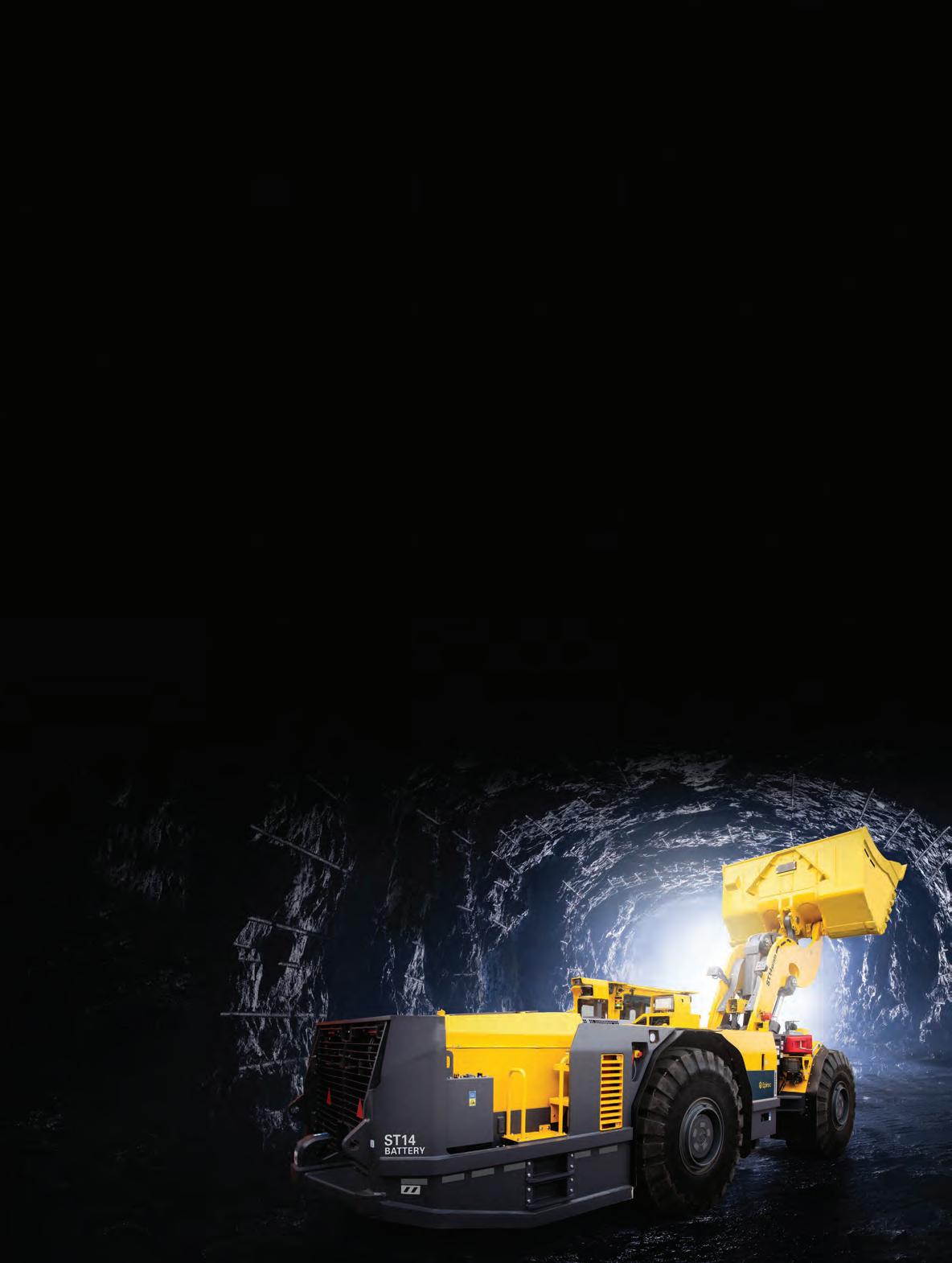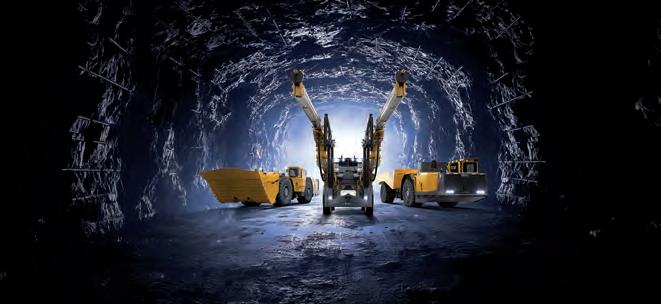
5 minute read
Charging towards better battery operations
Technology Charging towards better battery operations
WITH A GLOBAL SHIFT TOWARDS DECARBONISATION, ORIGINAL EQUIPMENT MANUFACTURER EPIROC IS AT THE FOREFRONT OF PROVIDING BATTERY ELECTRIC SOLUTIONS FOR THE MINING AND RESOURCES INDUSTRY.
The Western Australian Government has released the state’s first-ever environment, social and governance (ESG) information pack, which includes Minerals Research Institute of Western Australia (MRIWA) challenges as an essential component to achieving the outcomes.
The MRIWA has two challenges that appear in the ESG information pack, including the Net Zero Emission Mining challenge which aims to reduce the carbon footprint, lower overall energy costs and improve the energy efficiency of the WA mining sector through harnessing collective efforts and enabling decarbonisation to become an opportunity for the sector rather than a cost.
One of the keys to reducing the carbon footprint in the resources sector is the adoption of battery electric machinery and equipment.
Global original equipment manufacturer Epiroc has recently bolstered its support for battery electric vehicles with a range of charging products for mining equipment, both fixed and mobile, with remote monitoring capabilities.
Epiroc Australia and Asia-Pacific electrified solutions product and sales support lead.
Brett Kenley says the company has made massive strides when it comes to its battery electric offering.
“Our first battery equipment that we released goes back to about 2013, which was a little ST7 loader and a matching 20-tonne truck,” he says.
“That was more to prove the concept that we could use battery equipment underground and it certainly proved that concept.
“However, our first generation didn’t have any on-board cooling, so we now have a thermal management system onboard.
Kenley says with Epiroc’s first generation battery system, in order to run one machine, the company needed three batteries - one on-board, one on the charge and then one cooling.
“What we have now is our secondgeneration batteries, which are provided by Northvolt, and that has an on-board cooling system, also known as our thermal managing system,” he says.
“So while it is on the charge it is
Epiroc’s ST14 uses four battery sub-packs.
Epiroc says there has been increased demand for battery solutions over the past 12-18 months.
actually cooling which keeps them at an optimum temperature.
“What that enables you to do is charging on-board, so you don’t have to remove the battery.
“Or you can do a battery swap where one battery comes of the charge, into the machine and away you go.”
Kenley says while the uptake of the company’s battery solutions has been steady, there has been increased demand over the past 12-18 months.
“At our last results we had a total of 48 sold machines around different parts of the globe,” he says.
“Diesel equipment has been operating for a significant period of time, so for the electrified equipment it is going to take a little bit of time to establish some key metrics.
“A lot of companies are just sitting and waiting to see what happens in that space, but early signs are very promising.”
Epiroc uses a modular design, so its batteries are scalable. In its drill rigs the company runs two sub-packs which is in a main battery pack.
That battery pack fills the spot where the diesel engine would fit.
“For our ST14 loader we have four sub-packs, so as you increase in size you are able to increase the kilowatt hours of usable energy that you can operate that piece of machinery on,” Kenley says.
“For Epiroc it is a good system where you can easily increase the kilowatt hours depending on which piece of machinery it is going into.”
Epiroc has also been able to install its scalable system into other OEM equipment and machinery.
Kenley says it is important to be able to assist other OEMs that may not have the funding or technology available.
“There are certainly OEMs out there that don’t have the research or development areas where they can invest into battery alone,” he says.
“To me, if we are truly going to halve the emissions by 2030 and reach net-zero by 2050, there is no doubt there are going to be some mining company suppliers that need some sort of solution.
“I think it is important that we have that kind of product that we can offer to other OEMs so they can move into that space.”
Epiroc’s partnership with Kempower is one way in which the company collaborates to develop fast-charging solutions for electric vehicles.
Another Epiroc development was the recent acquisition of Meglab, adding inhouse innovation for efficient electrical infrastructure including chargers.
Epiroc’s acquisition of FVT Research in September rounded out the company’s electric vehicle offering, as it can now offer battery conversion kits to allow mining companies to transition at their own pace to full electrification.
“What we are seeing is that the battery technology is advancing quite rapidly and in the mining industry there are many people moving in that direction,” Kenley says.
“It is difficult to see exactly where it will end up, it might be something along the lines of a solid-state battery, but there are certainly different areas that we are looking at, particularly with our haul trucks.
“Haul trucks place a heavy demand on the battery, depending on the battery chemistry, but what we are seeing is that there needs to be a supplement there.”
Kenley says customer feedback from the people operating Epiroc’s machines has been that they don’t want to go back to operating the diesel equipment, in some cases just on the vibration and noise alone.
“If we can make a comfortable work environment for the people working on the ground, then that is a good result for everyone,” he says.
“We all realise the importance of safety and part of that safety is wearing ear protection.
“The difference in the noise alone between the diesel and battery equipment is incredible and the uptake of batteries will have a huge benefit on health and safety in terms of hearing.”
Kenley says the company recognises the safety benefits of battery electric equipment.
“I think it is important that we want to make the mines safer by having electrified equipment and then moving into the automation space as well,” he says.
“To have an automated battery piece of equipment means we are getting feet off the ground in regard to danger areas and we are lowering emissions.
“We are also reducing vibrations in the machines which has real benefits for operators who are working in the equipment for a long period of time.”











